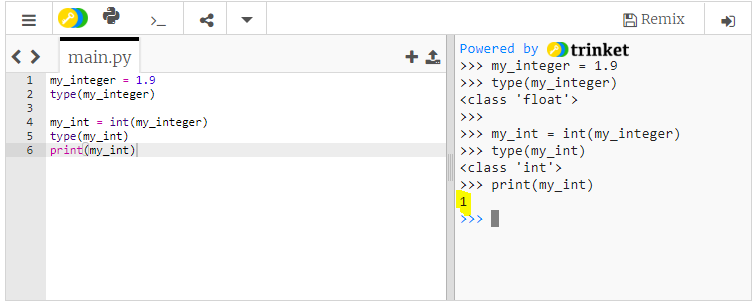Hello Pradyumna
The code in this particular example is as follows:
my_integer = 1.9
The above code creates a variable called my_integer and assigns it a value of 1.9. This will automatically make this variable a float type because it is not an integer, but a real number.
type(my_integer)
This code causes output that indicates the type of variable that my_integer is. You can see this returns the following text: <class ‘float’> so it is verified that the my_integer variable is of float type.
my_int = int(my_integer)
The above code takes the my_integer variable, which is of type float, and converts it to an integer, and stores it in the my_int variable. The result is that the my_int variable now contains an integer of value 1. Remember that whenever a float type is converted to an integer type, the result is a “floored” value, meaning any decimal digits are simply removed.
If you add the following code, you can print out the value of the my_int variable:
print(my_int)
From the below screenshot you can see that this value is indeed 1.
type(my_int)
Finally, the above code returns the type of variable that my_int is which is an integer.
I hope this has been helpful!
Laz
